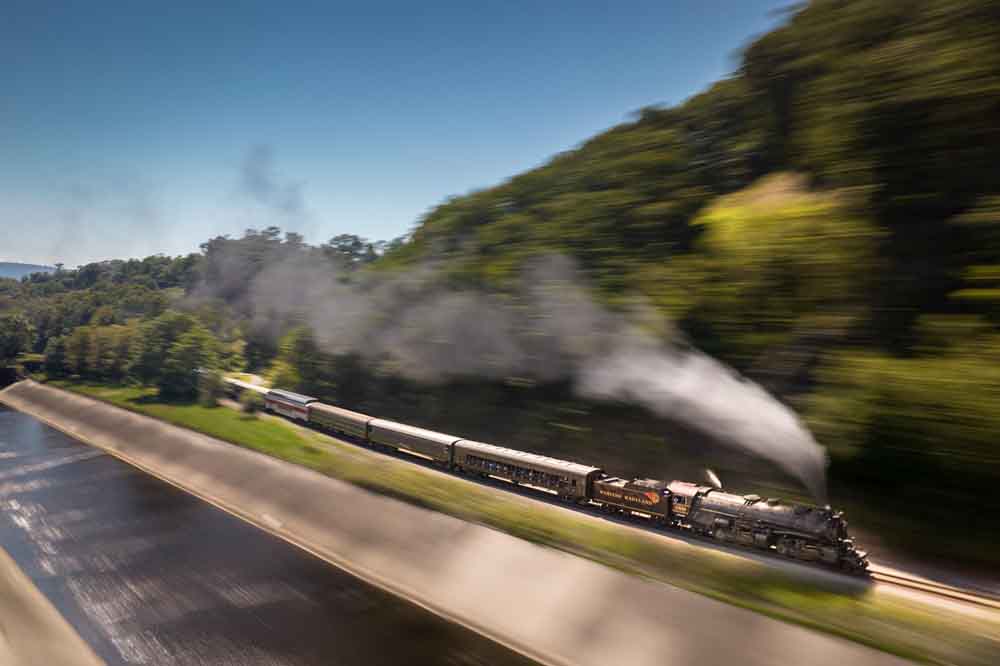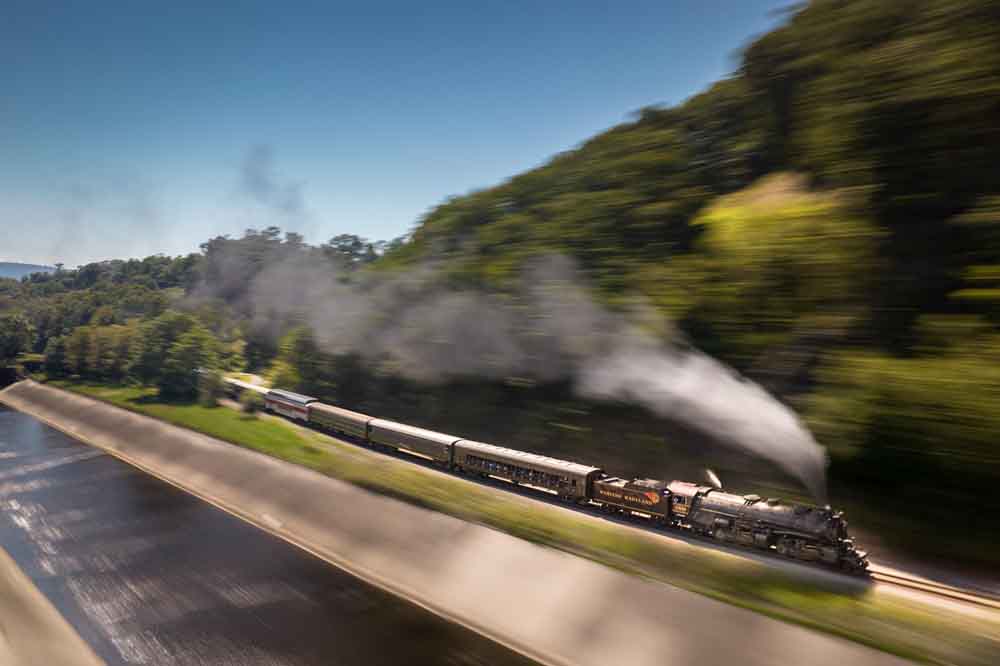[ad_1]
Aerial photography

Digital photography is constantly improving, and these advancements are empowering photographers to push the boundaries and explore new styles of photography. A new style that has recently emerged reinvents the classic, pan and pace. Using a low shutter speed and a steady hand, this style allows photographers to focus on the subject – typically a lead locomotive – and track its movement through the viewfinder at the same speed. End results show a tack sharp subject with blurred foreground and backgrounds. Pan shots are more challenging as the photographer is typically stationary, while pacing is easier – providing you have a driver – as you parallel the subject, matching its speed. The results are often dramatic and evoke the essence of machinery and speed.
But today, this classic style is reaching new heights – literally – as photographers apply the same principles, though from the air using aerial drones. This makes achieving the end result more complicated. There are a few initial observations that make this a challenging style to execute.
1) Without the benefits of viewfinders, photographers must gauge the subject’s speed through a smartphone remotely connected to the drone’s controller or via another LCD screen. This is not as easy as physically eyeing the train and using a viewfinder to match its speed of motion. There is also the idea that shutter lag, or delay, may skew the focal point if the train’s speed differs from the drone.
2) Photographers must be familiar with the aerial territory to ensure no unexpecting obstructions are in the path of the pace. Towering obstructions in the vicinity of the pace limit the window of opportunity.
And 3) leveraging a slow shutter speed, oftentimes, 1/10th or 1/15th of a second, absorbs more ambient light, overexposing a photo unless photographers combat this with ultra-low ISO speeds or a high aperture, narrowing the amount of light. Not all drones are this sophisticated (yet), meaning the style of photography could be mostly limited to low-light conditions for some picture takers.
But one photographer has pioneered in this field, and I was eager to learn more about his success and experimentation with this dramatic style.
Aerial photography with Brandon Fiume:
Q: How many experiments did it take before you were content with your first aerial pace shot?
A: I’ll admit, I had significant beginner’s luck. During the first two days of trying to pace trains, I had a high success rate of one sharp photo for every two flights with each flight producing about a dozen frames. In fact, the first train that I shot yielded a sharp, well-exposed photo. I was certainly surprised that it worked on the first try, and I certainly underestimated the difficulty to reliably capture trains in this manner. Subsequent attempts have been less than fruitful, and I’ve had several outings where I didn’t produce a single usable image from an entire day of attempts.
Q: I understand the concept of slow shutter speed, high aperture, but how are you able to execute this in daylight without overexposing the composition and losing detail?
A: My drone has a fixed aperture of f/2.8, which makes controlling exposure quite difficult since I can only adjust shutter speed and the ISO. To compensate for a slow shutter speed, I use a series of fixed neutral density filters from ND16 to ND2000. The filters allow me to shoot up to 1 second in broad daylight and having a range of filters allows me to compensate for various lighting conditions. When the sun moves behind a cloud, I can only compensate by decreasing the shutter speed to ensure proper exposure since I cannot change filters mid-flight.
Q: What is your biggest challenge you have faced with this style of photography and what could be improved (by drone manufacturers) to make this process easier?
A: The biggest challenge is certainly trying to keep pace with the train, it requires a lot of precision with the controls to not only synchronize the speed and direction with the train, but also keep the train at the right point within the frame, all within a finite amount of straight track and flying range. If I’m flying faster than the train, I have to decrease my speed to let the train catch up, and then speed back up. If I’m flying slower than the train, I have to increase my speed which may not be possible due to maximum speed of the drone. Time is of the essence with this process; a long process will yield fewer frames.
Many photographers have asked about using autonomous flight modes that can track the subject, and many are under the impression that the tracking features can be used for pacing shots. The active tracking modes can only be used for video, and the current implementation favors following the subject from behind and favors panning. Within the current technology, pacing trains is not possible using the flight modes. When a frame is captured during an autonomous flight mode, the video feed is interrupted, causing the drone to cease tracking the train and hover.
I would love to have the ability to have an adjustable cruise control, similar to that on an automobile. It would make the matching of the train’s speed significantly easier, and I wouldn’t have to worry about maintaining the speed.
Fiume is currently flying with a DJI Air 2S and his photography is published on his website here.
[ad_2]
